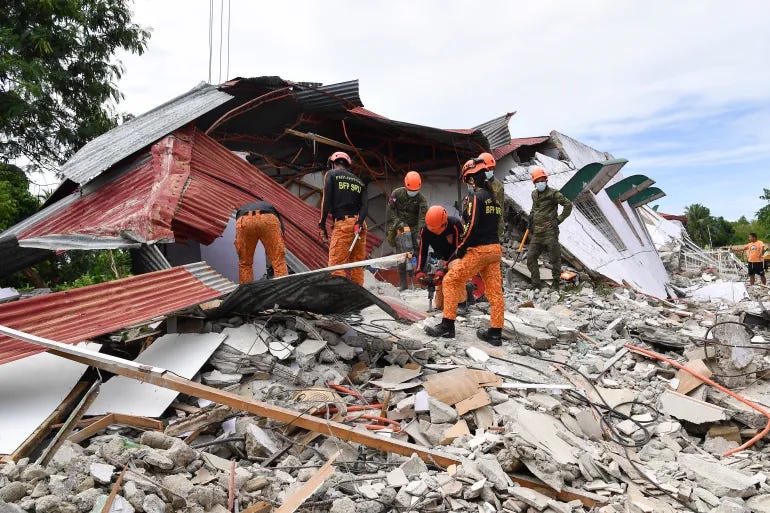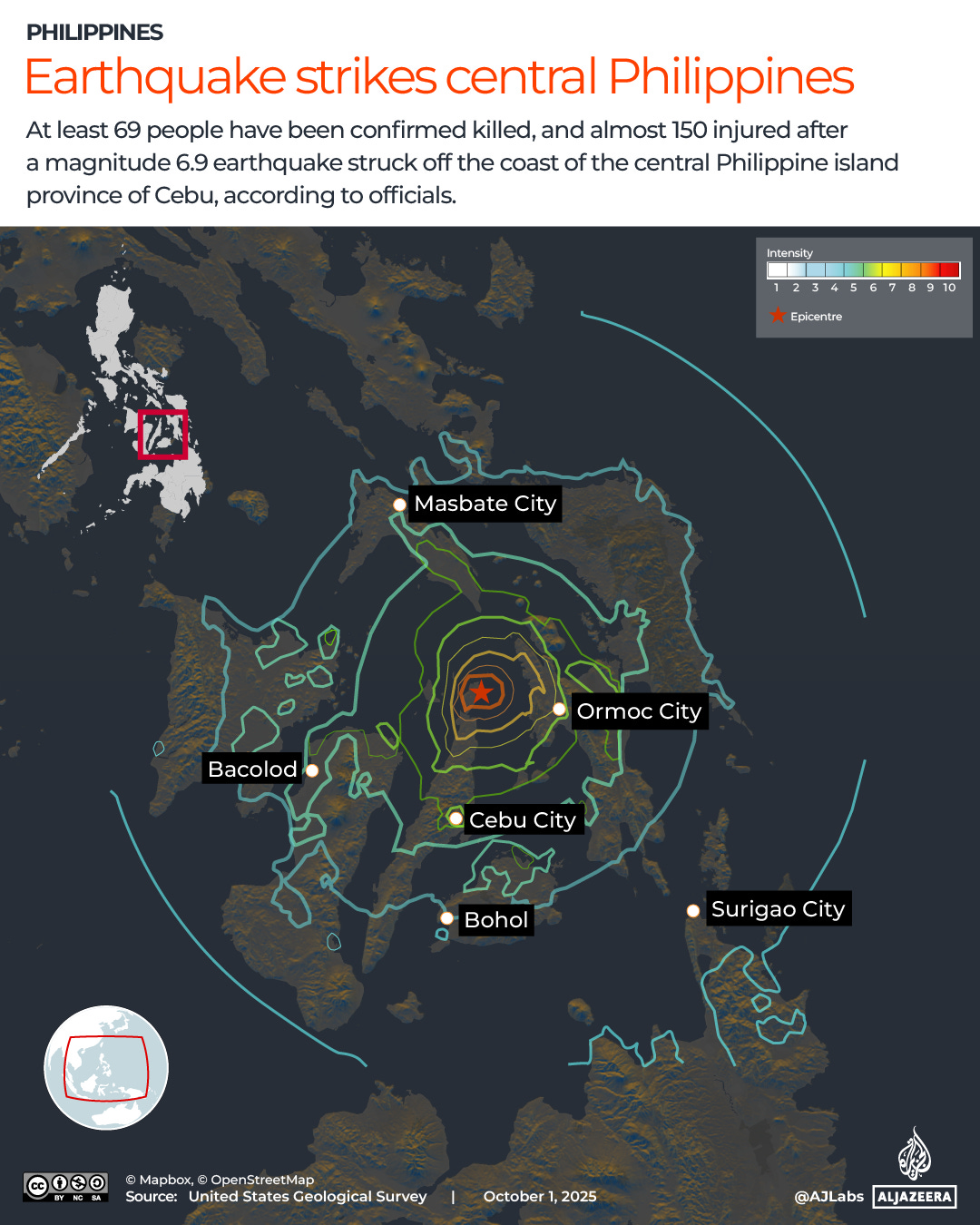Powerful 6.9-Magnitude Earthquake Hits Central Philippines
At least 69 people killed, more than 140 injured as Cebu province reels from destruction; authorities declare state of calamity and launch urgent rescue operations.
Philippine, PUREWILAYAH.COM - At 9:59 p.m. local time on Tuesday (13:59 GMT), a magnitude 6.9 earthquake struck 12 miles northeast of Bogo City in Cebu province, part of the country’s central Visayas region.
The quake had a depth of about 10 km (6.2 miles), making it a shallow earthquake—the type that usually causes more damage because the epicenter is close to the Earth’s surface.
The US Geological Survey (USGS) reported four aftershocks of magnitude 5 or higher. Residents across the Visayan Islands—including Cebu, Biliran, and Leyte—felt the tremors.
The Philippine Institute of Volcanology and Seismology (Phivolcs) initially issued a tsunami alert for Leyte, Biliran, and Cebu, but lifted it by Wednesday morning after detecting no unusual wave activity.
Extent of the Damage
Local authorities placed parts of Cebu province under a state of calamity after the earthquake toppled buildings and triggered widespread power outages.
Bogo City, with about 90,000 residents, was worst hit: more than 20 people confirmed dead, including four children.
Casualties were also reported in Medellin, Tabuelan, and San Remigio, where seven people—including firefighters and coast guard members—died when a roof collapsed at the San Remigio Sports Complex during a basketball game.
Historical structures suffered devastating damage: the Saints Peter and Paul Parish on Bantayan Island collapsed, and a 139-year-old church in Daanbantayan was reduced to rubble.
Cebu Governor Pam Baricuatro highlighted the quake’s severe impact on heritage landmarks that form part of Cebu’s cultural and spiritual identity.
Rescue and Relief Efforts
Philippine President Ferdinand “Bongbong” Marcos Jr. expressed condolences and confirmed that the Bureau of Fire Protection and the Philippine National Police were assisting rescue missions, while the Department of Energy worked to restore electricity.
Hospitals in Bogo City reached maximum capacity as patients poured in, forcing some evacuations due to aftershocks.
Senator Risa Hontiveros, chair of the Senate health committee, oversaw relief operations and coordinated delivery of two truckloads of drinking water to hospitals.
The Philippine Red Cross reported treating at least 60 people across three provinces. Local officials also appealed for water, electricity, and rescue equipment, with Vice Mayor Alfie Reynes of San Remigio warning:
“It is raining heavily and there is no electricity. We really need help, especially in the northern part, because water supply lines were damaged.”
Governor Baricuatro urged residents to stay calm, avoid unstable structures, and move to open areas as aftershocks continued.
Why the Philippines Is Prone to Earthquakes
The Philippines lies along the Pacific Ring of Fire, a seismic belt prone to earthquakes and volcanic activity due to the constant movement of tectonic plates.
Other countries on the Ring of Fire include Indonesia, Japan, New Zealand, the US, Canada, Russia, Guatemala, Peru, and Chile.
Phivolcs has been developing earthquake awareness guides, and alerts are now disseminated through civil defense Facebook groups and other weather networks. The United Nations Anticipatory Action Pilot Programme has also partnered with the Philippine government to empower communities in disaster preparedness.
UN resident coordinator Gustavo Gonzalez stressed the importance of incorporating local ingenuity into disaster strategies, calling for “tailor-made solutions” to strengthen resilience in the Philippines. (PW)



